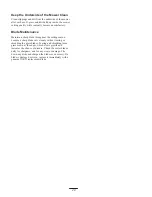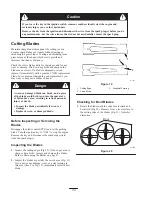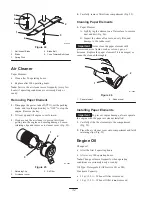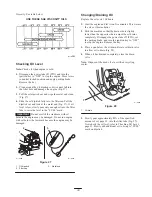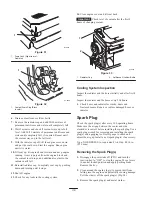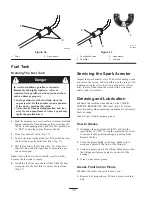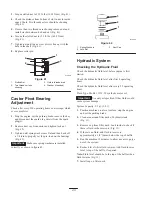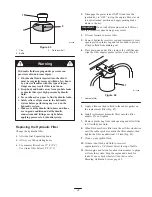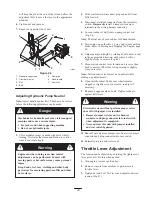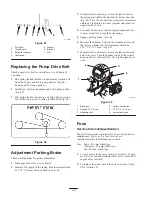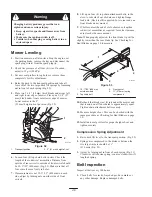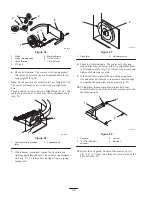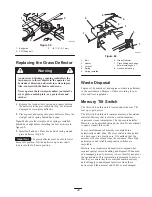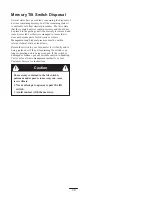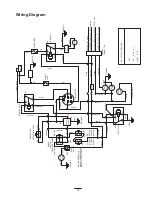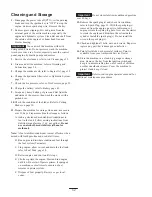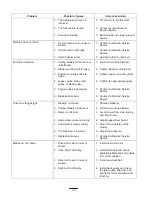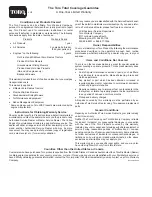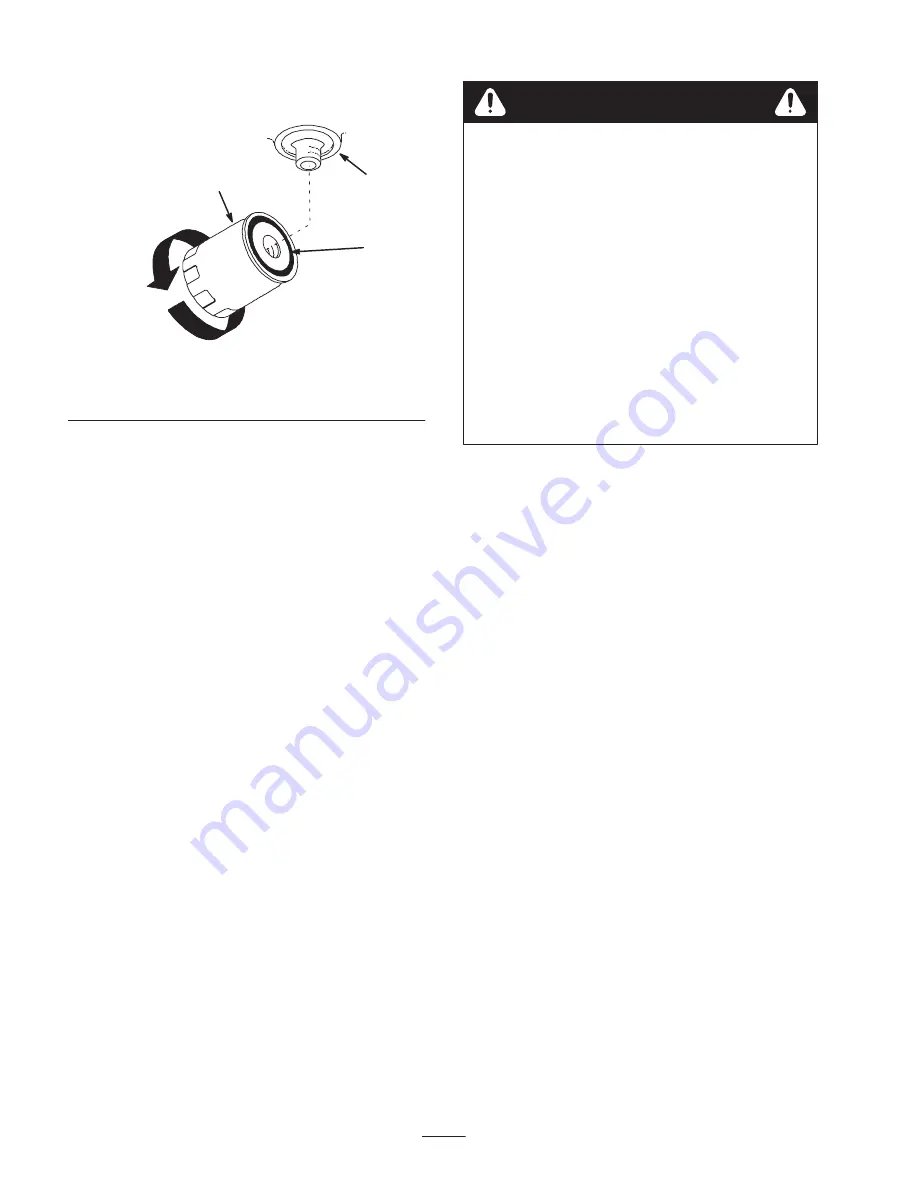
42
12. Recheck level while fluid is warm. Add fluid to raise
level to top of the baffle, if required. Do not over fill.
m–1256
1
2
3
Figure 45
1.
Hydraulic filter
2.
Gasket
3.
Adapter
Bleeding Hydraulic System
The traction system is self bleeding, however, it may be
necessary to bleed the system if fluid is changed or after
work is performed on the system.
1. Raise rear of the machine so wheels are off the ground
and support with jack stands.
2. Start the engine and run at idle speed. Engage traction
on one side and spin the wheel by hand.
3. When the wheel begins to spin on its own, keep it
engaged until wheel drives smoothly. (minimum
2 minutes)
4. Check hydraulic fluid level as it drops and add as
required to maintain proper level.
5. Repeat procedure on opposite wheel.
Check Hydraulic Lines
After every 100 operating hours, check hydraulic lines and
hoses for leaks, loose fittings, kinked lines, loose
mounting supports, wear, weather and chemical
deterioration. Make necessary repairs before operating.
Note: Keep areas around hydraulic system clean from
grass and debris build up.
Hydraulic fluid escaping under pressure can
penetrate skin and cause injury.
•
If hydraulic fluid is injected into the skin it
must be surgically removed within a few hours
by a doctor familiar with this type of injury.
Gangrene may result if this is not done.
•
Keep body and hands away from pin hole leaks
or nozzles that eject high pressure hydraulic
fluid.
•
Use cardboard or paper to find hydraulic leaks.
•
Safely relieve all pressure in the hydraulic
system before performing any work on the
hydraulic system.
•
Make sure all hydraulic fluid hoses and lines
are in good condition and all hydraulic
connections and fittings are tight before
applying pressure to hydraulic system.
Warning
Adjusting Motion Controls
Adjusting Handle Neutral
If motion control levers do not align, or move easily into
the console notch, adjustment is required. Adjust each
lever, spring and rod separately.
Note: Motion control levers must be installed correctly.
See Install Motion Control Levers on page 15.
1. Stop engine, remove ignition key and tilt seat forward.
2. Begin with either the left or right motion control lever.
Move lever to the neutral (but not locked) position and
pull lever back until the clevis pin (on arm below pivot
shaft) contacts the end of the slot (just beginning to put
pressure on spring) (Fig. 46).
3. Check where lever is relative to notch in console
(should be centered allowing lever to pivot outward to
the neutral lock position) (Fig. 46).
4. If adjustment is needed, loosen the nut against the
yoke.
5. Apply slight rearward pressure on the motion control
lever, turn the head of the adjustment bolt in the
appropriate direction until lever is centered in neutral
lock position (keeping rearward pressure on the lever

